VLE - A house for R. and J.
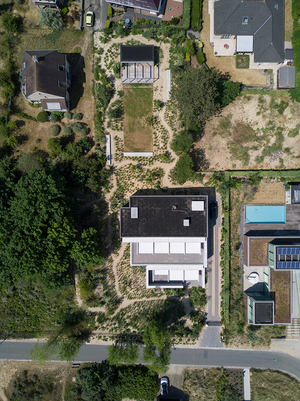


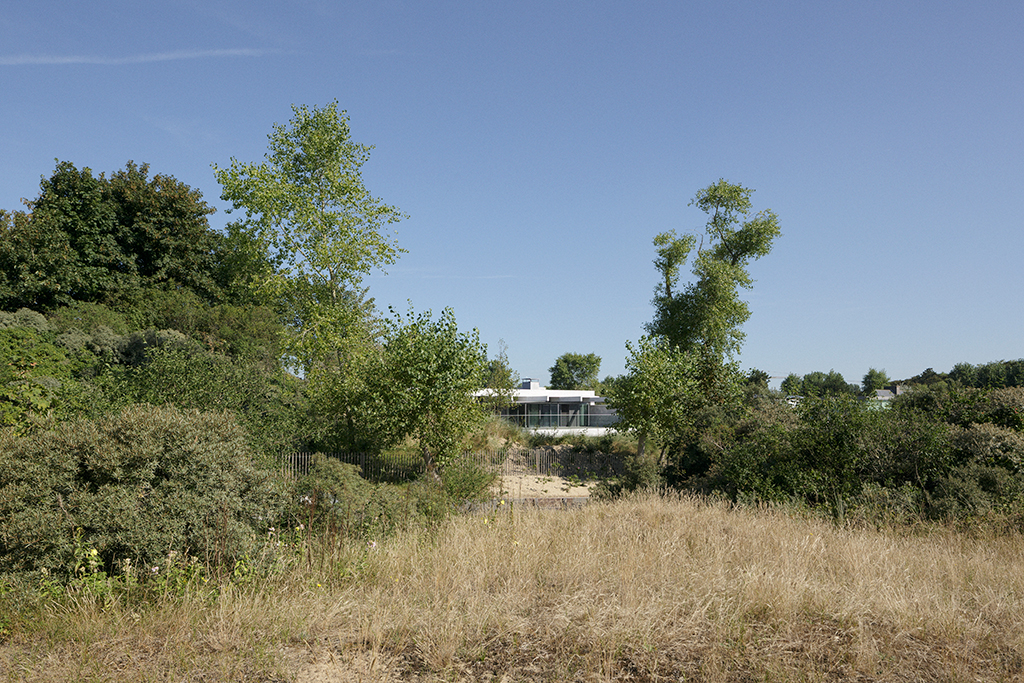
The outset for this house was Jan and Régines search for a refuge from the hectic city life of Antwerp. This plot, situated on the edge of the nature reserve Witte Burg, best fitted this criteria.
The terrain was initialy an untouched piece of dune with the typical vegetation running through it. The dune followed the street border from the bottom right to the upper left. From the start it was clear for the design team that it had to be preserved and that the house should become a part of it. The premise of the project was the relationship between dwelling and nature.
The terrain was initialy an untouched piece of dune with the typical vegetation running through it. The dune followed the street border from the bottom right to the upper left. From the start it was clear for the design team that it had to be preserved and that the house should become a part of it. The premise of the project was the relationship between dwelling and nature.



The organisation of the two floors follow the same concept: a corridor situated at the back facade, functioning as a longitudinal axis, connects the bedrooms, bathroom, kitchen, dining room and living room.
On the ground floor, all the rooms open up towards the half embedded terrace, on the first floor the space opens up towards the large south terrace, overviewing the garden and the dune landscape of the neighbouring natural reserve. The continuation of this straightforward plan concept creates a balanced experience of these spaces.
In order to limit the height of the house, it was decided to embed it into the dune. The existing profiel of the dune led to the stacking of the two floors, thus following the natural slope. The full height of the building is only visible at the east facade.
The building consists of two volumes, separated by an inner street/garage. Apart from creating a place for themselves, Jan and Régine wanted to open up their home for their children. They have their own residence on the ground floor and can use is at their conveniance.
On the ground floor, all the rooms open up towards the half embedded terrace, on the first floor the space opens up towards the large south terrace, overviewing the garden and the dune landscape of the neighbouring natural reserve. The continuation of this straightforward plan concept creates a balanced experience of these spaces.
In order to limit the height of the house, it was decided to embed it into the dune. The existing profiel of the dune led to the stacking of the two floors, thus following the natural slope. The full height of the building is only visible at the east facade.
The building consists of two volumes, separated by an inner street/garage. Apart from creating a place for themselves, Jan and Régine wanted to open up their home for their children. They have their own residence on the ground floor and can use is at their conveniance.
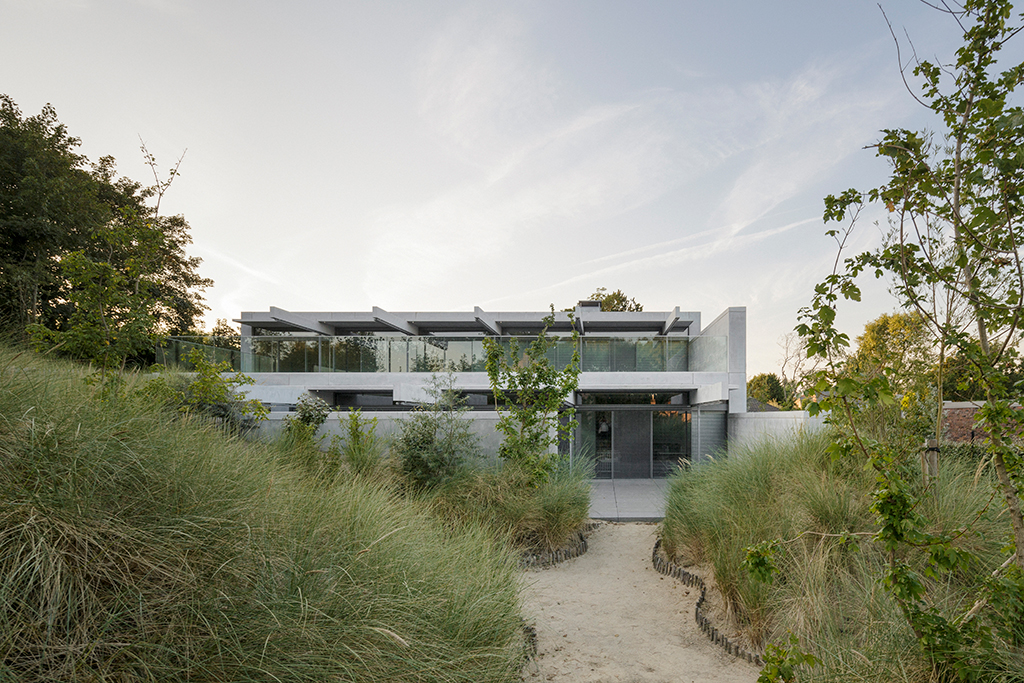

Half embedded, the house reveals itself bit by bit. A stroll through the garden, around the house, is the only way to get insight into the way the two stacked entities relate to each other and to their surroundings.
The entrance is located on the side of the house. The inner street gives acces to the front doors of the ground and first floor. The other windows are calculated perforations which provide natural morning and evening light apart from perspective and direction at the end of each corridor.
The back facade is closed with one carefully placed window which looks out over the more structured part of the garden and the garden shed, situated at the back of the plot. From this part of the garden, the house resembles a monolith, half embedded in the garden and creating a balance between garden, dune and house.
The front, south facing facade does the opposite by opening up entirely towards the surrounding dune landscape.
Peace and balance are reinforced by a consistent and unambiguous use of materials. The facades consist solely of concrete prefab elements and glass. The white sun shadings on the south facade, who open up between the concrete beams, ensure an everchanging front facade.
The entrance is located on the side of the house. The inner street gives acces to the front doors of the ground and first floor. The other windows are calculated perforations which provide natural morning and evening light apart from perspective and direction at the end of each corridor.
The back facade is closed with one carefully placed window which looks out over the more structured part of the garden and the garden shed, situated at the back of the plot. From this part of the garden, the house resembles a monolith, half embedded in the garden and creating a balance between garden, dune and house.
The front, south facing facade does the opposite by opening up entirely towards the surrounding dune landscape.
Peace and balance are reinforced by a consistent and unambiguous use of materials. The facades consist solely of concrete prefab elements and glass. The white sun shadings on the south facade, who open up between the concrete beams, ensure an everchanging front facade.
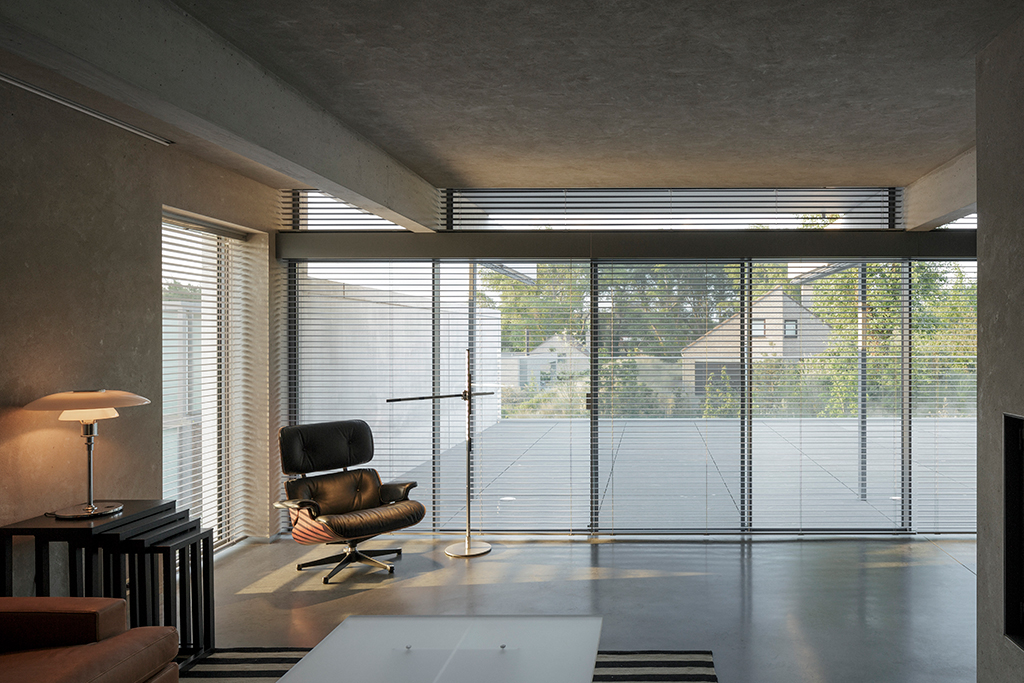



The concrete beams, which have a structuring as well as a constructive function, remain visible on the inside . As on the outside, a rather limited palette of materials was chosen a balanced and elegant interior which could serve as a pure canvas for the inhabitants, ready for use.



The floors of the livingrooms are polished concrete, the ones in the bedrooms are custom-made wood panels and all the sanitary spaces have a white quartz floor. All the fixed furniture was realised in oak veneer and creates together with the lime plaster, used on the walls and ceilings a balance with the concrete of the facades, floors and beams.
A selective use of stainless steel and glass for the sliding doors, kitchen worktops, lighting fixtures and taps adds detail to the interior.
A selective use of stainless steel and glass for the sliding doors, kitchen worktops, lighting fixtures and taps adds detail to the interior.
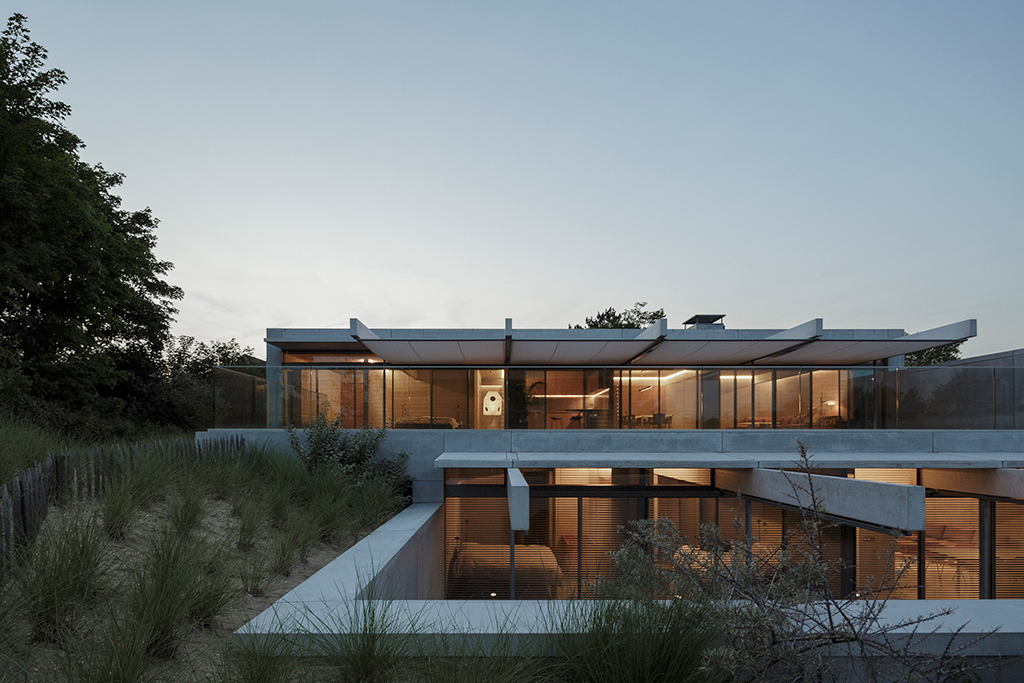


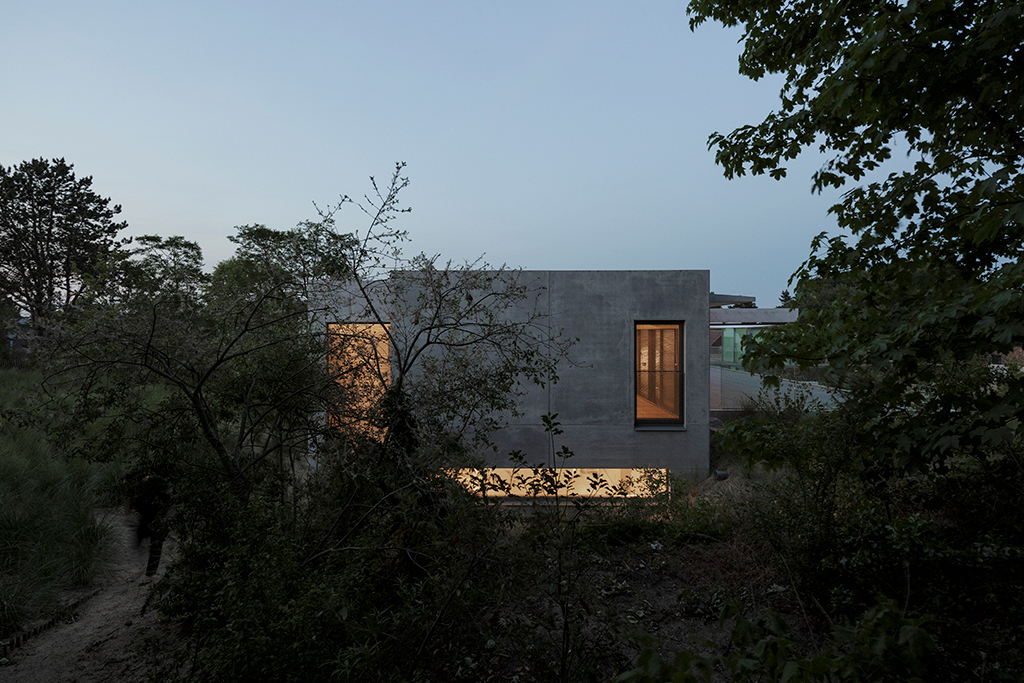
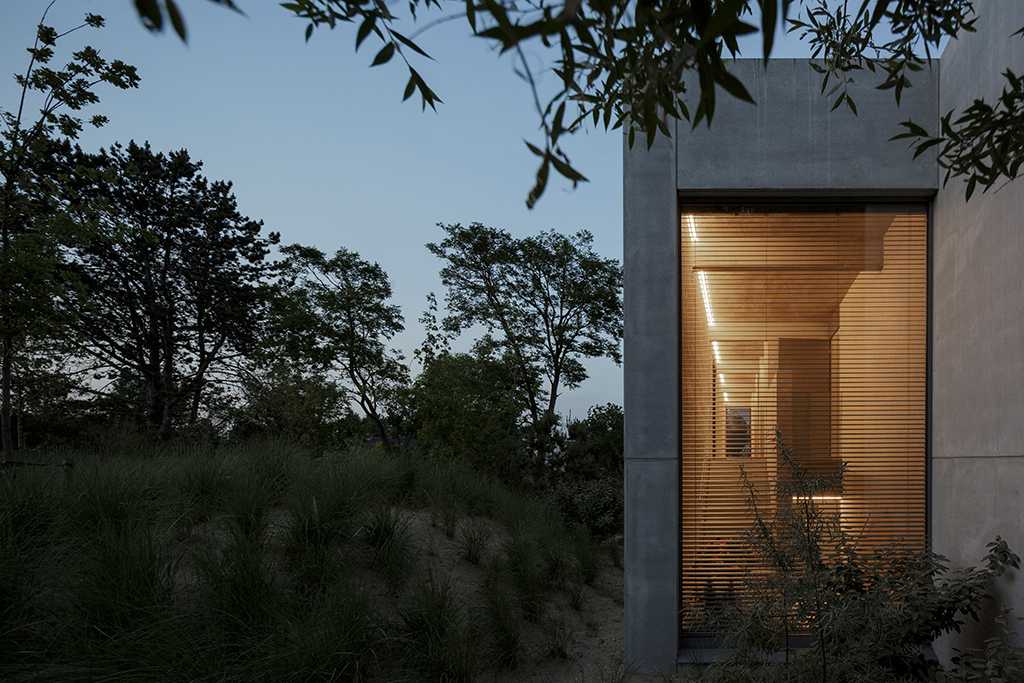
Location Oost-Duinkerke(BE)
completion 2017
client private
program freestanding house in the dunes
concept Paul ibens i.c.w. i.s.m.architecten
architecture i.s.m.architecten
interior architecture i.s.m.architecten
landscape architecture Eric Dhont Landscape Architects
photographs Luis Dìaz Dìaz